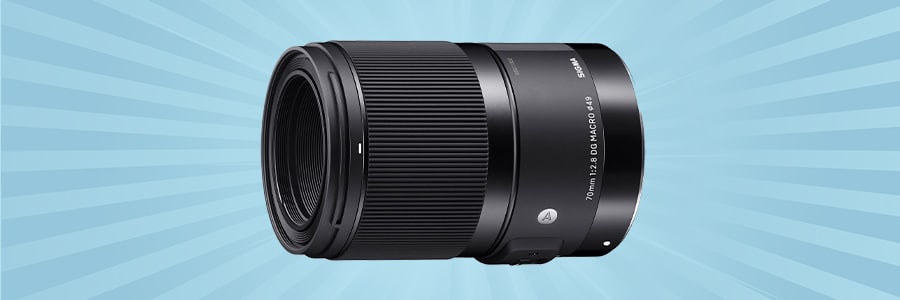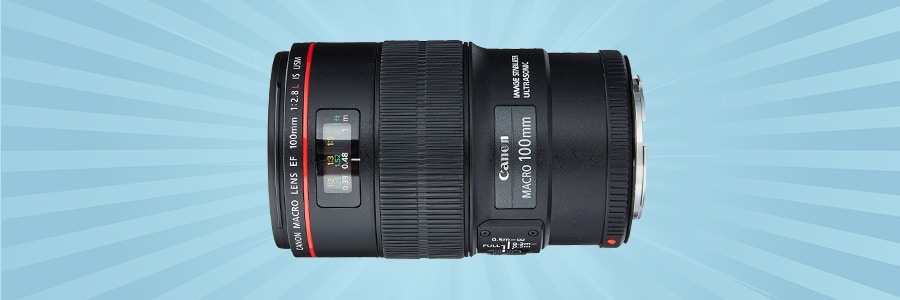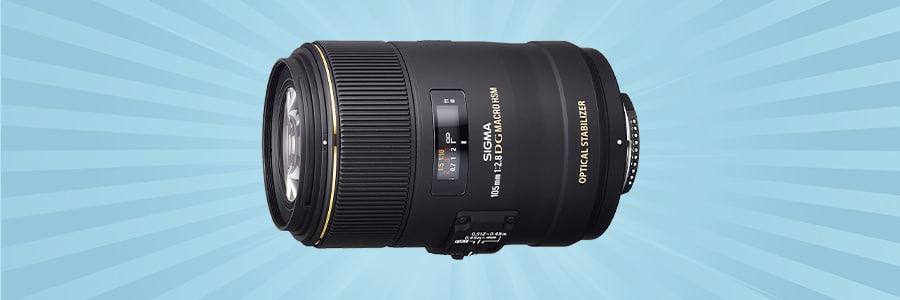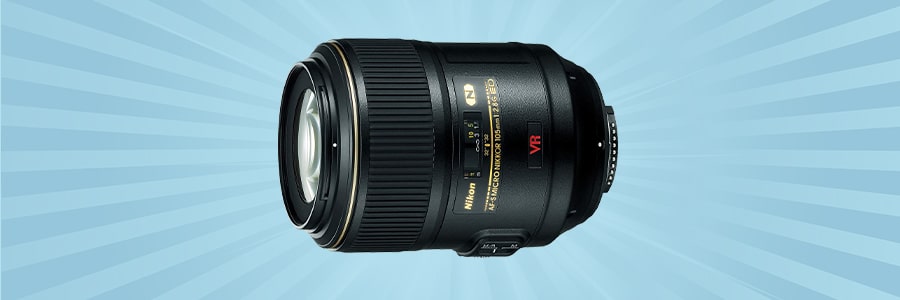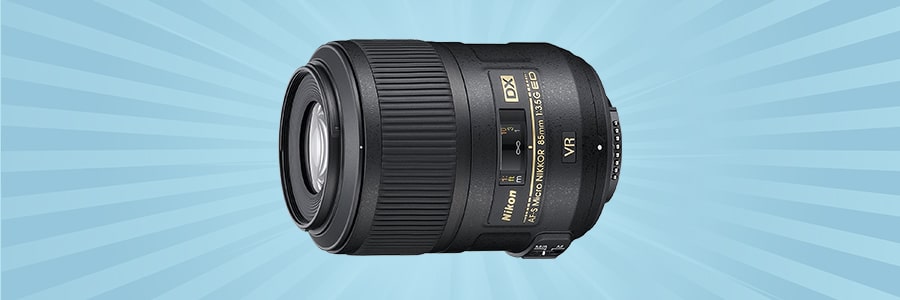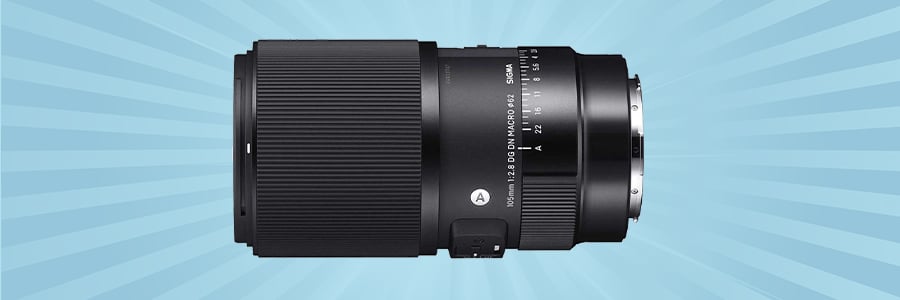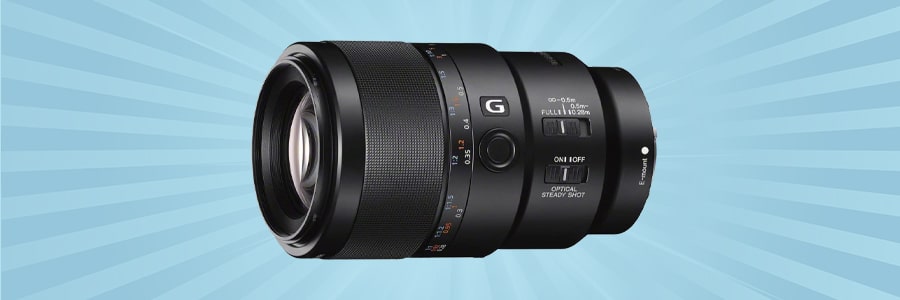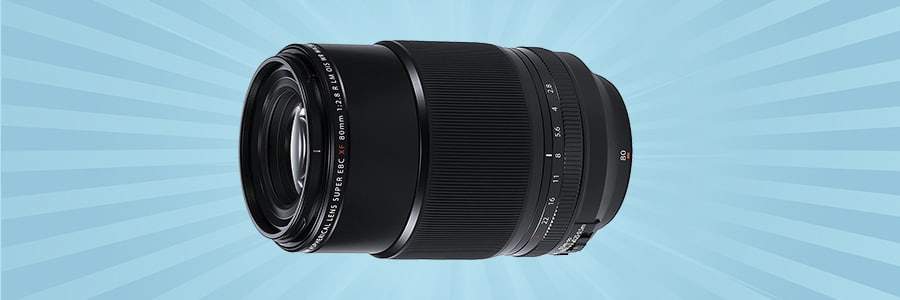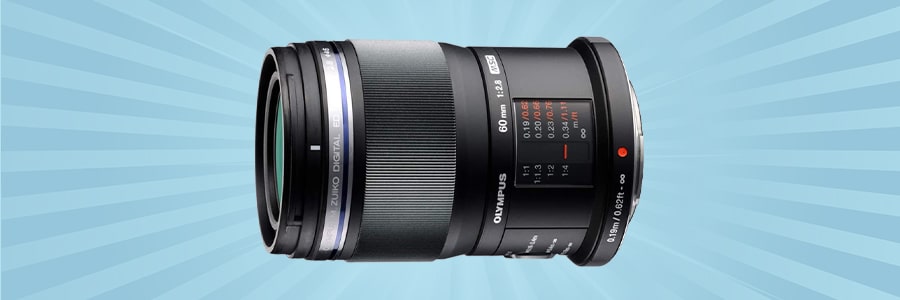
Best Macro Lens for Closeup Photography
Want to get closer to your subjects with some macro photography? Discover 16 of the best macro lenses for Nikon, Canon, Sony, Fujifilm and Micro 4/3 Cameras.
If you’re looking for the best macro lens to attach to your camera here in 2023, this is the guide for you.
We’ve been shooting macro photography and reviewing lenses for several years and will be recommending only the macro lenses that meet our high standards.
That said, most photographers are on a budget, so that’s why we’ve uncovered the best value-for-money lens options – macro lenses that offer top bang for your buck!
Macro photography can be a lot of fun, but you definitely need the right gear to get great images.
Whether you own a DSLR or mirrorless camera with a micro 4/3, APS-C or full-frame sensor, there’s a great macro lens for you – just pay attention to the ‘mount’ guidelines below to ensure that the lens fits your camera.
There’s a lot of confusion surrounding macro lenses in general, so if you’re unsure, skip ahead to our FAQ section for all the answers.
Or if you just want to start taking amazing macro photos, here are the top lenses of the year.
Table of Contents
Best Macro Lenses for Canon Cameras
Tamron SP 90mm f/2.8 Di VC USD Macro
Mount: Canon EF, Nikon F, Sony A | Elements/groups: 14/11 | Diaphragm blades: 9 | Autofocus: Ultrasonic (ring-type) | Stabilizer: Yes (hybrid) | Minimum focus distance: 0.3m | Maximum magnification: 1.0x | Filter thread: 62mm | Dimensions (WxL): 79 x 117mm | Weight: 610g
Our absolute favorite macro lens for Canon shooters, the Tamron 90mm f/2.8 features top-end performance at a price that’s simply a steal for this type of quality.
The maximum aperture of f/2.8 is perfect for both macro photography and portraits, and the 90mm focal length hits the sweet spot on full frame cameras.
Images – both close-ups and portrait – come out tack-sharp, with beautiful color and contrast, and with creamy bokeh when shooting at a shallow depth of field.
There’s zero ghosting, flare, distortion, or chromatic aberrations with the Tamron 90mm. It comes with image stabilization and weather sealing, and handles beautifully.
The only issue with this lens is the out-of-the-box not-so-fast autofocus – something easily fixed with a firmware update via Tamron’s Tap-in Console. (This will also improve the Image Stabilization even further.)
Sure, it’s an additional purchase, but it will revolutionize the way this lens works (as well any other modern Tamron lens you buy).
For under US$650, a 6-year warranty, and performance that outdoes the Canon EF 100mm f/2.8L, the Tamron 90mm f/2.8 is definitely a steal.
Sigma 70mm f/2.8 DG Macro Art
Mount: Canon EF, Sony E, Leica L | Elements/groups: 13/10 | Diaphragm blades: 9 | Autofocus: Focus-by-wire DC motor | Stabilizer: None | Minimum focus distance: 25.8cm | Maximum magnification: 1x | Filter thread: 49mm | Dimensions (WxL): 70.8 x 105.8mm | Weight: 515g
If you’re not looking for a macro lens that also doubles as a portrait lens, the Sigma 70mm f/2.8 DG Macro ART is a fantastic option.
It’s slightly less expensive than the Tamron SP 90mm, has truly superb optics, and is fully compatible with Canon’s Lens Aberration Correction.
The build is solid yet compact and includes weather sealing. You can fine-tune the focus manually while the autofocus is fully engaged.
Sigma left off some of the bells and whistles with this lens and chose to focus solely on image quality… and it shows.
Images come out simply stunning, with incredible sharpness and clarity, but there’s no image stabilization or other perks one would expect in a lens of this quality.
Still, the real reason to buy this lens is the sharpness. It’s simply out of this world.
So if you’re one of the many macro shooters who uses a tripod and isn’t planning on using your macro lens for portrait photography, this Sigma 70mm should be at the top of your list.
Want to learn more about it? You can read our Sigma 70mm f/2.8 DG Macro ART review which also includes some images shot with this impressive lens.
Mount: Canon EF | Elements/groups: 15/12 | Diaphragm blades: 9 | Autofocus: Ultrasonic (ring-type) | Stabilizer: Yes (hybrid) | Minimum focus distance: 0.3m | Maximum magnification: 1.0x | Filter thread: 67mm | Dimensions (WxL): 78 x 123mm | Weight: 625g
The best macro lens made by Canon is the EF 100mm f/2.8 L Macro, especially if you prefer a longer focal length.
If you’re using lighting for you close up photography, the longer focal length gives you a greater working distance from your subjects and helps to not cast shadows.
Also, the barrel of the Canon EF 100mm doesn’t move while focusing, so you don’t risk hitting your subject or scaring it away.
Though many macro photographers prefer to focus manually, the Canon EF 100mm f/2.8 Macro has three different autofocus settings. Set it to search only from 0.3m – 0.5m, for example, and you can really quicken the autofocus during close up photography.
In keeping with all Canon L lenses, the image quality on this lens is superb, with highly detailed life-size images and especially beautiful bokeh up to f/5.6.
The hybrid image stabilization system is fantastic and the build quality is what you’d expect from a Canon lens in this price range.
The only real con with the EF 100mm f/2.8 Macro is that it’s more than double the price of both the Tamron SP 90mm and the Sigma 70mm.
Still, if you’re wanting a macro lens you can use out and about and not just on a tripod, the image stabilization, optical quality and fast autofocus of the Canon EF 100mm f/2.8 may make it worth the extra $600.
Mount: Canon EF, Nikon F, Sony A, Sigma SA | Elements/groups: 16/11 | Diaphragm blades: 9 | Autofocus: Ultrasonic (ring-type) | Stabilizer: Yes | Minimum focus distance: 0.31m | Maximum magnification: 1.0x | Filter thread: 62mm | Dimensions (WxL): 78 x 126mm | Weight: 725g
If you’re looking for a reasonably inexpensive full-frame macro lens that will also double as a great portrait lens, the Sigma Macro 105mm f/2.8 EX DG may just fit the bill.
It has a fast, silent autofocus, image stabilization, and the 105mm focal length works well for both portraits and macro photography, giving you plenty of working distance.
Many photographers say that the image quality of the Sigma 105mm rivals the Canon EF 100mm f/2.8 L. True or not, even if it only comes close, at roughly half the price it’s more than worth it!
Images come out pleasingly sharp, with exceptional color and next to no chromatic aberration.
Also, if you’re into teleconverters, the Sigma 1.4x and 2.0x work excellently with this lens and will broaden out your focal length to 147mm and 210mm respectively.
Overall, at well under US$600, this is an excellent all-around macro lens.
Canon EF-S 60mm f/2.8
Mount: EF-S | Elements/groups: 12/8 | Diaphragm blades: 7 | Autofocus: Ultra-sonic (ring-type) | Stabilizer: None | Minimum focus distance: 20cm | Maximum magnification: 1x | Filter thread: 52mm | Dimensions (WxL): 72.9 x 69.85mm | Weight: 335g
The first true macro lens created by Canon for its APS-C crop sensor cameras, the Canon EF-S 60mm f/2.8 Macro USM is a great macro lens for those just getting into macro photography.
Not only does it outperform its more than reasonable price point, but its build quality and compact size also make it a fun little lens to roam around with.
Equivalent to a 96mm lens on a full-frame camera, the focal length hits the sweet spot for most macro photography, as does the maximum aperture of f/2.8.
Images come out nicely sharp and with more detail than you’d be able to see with the eye alone.
What’s especially nice is the Canon 60mm’s fast and almost silent auto-focus – faster and quieter than many macro lenses at higher price points.
This lens’s full-time manual focus override is also a nice touch.
Since all Macro lenses have something of a learning curve, the Canon EF-S 60mm f/2.8 is a great starter lens for first-time macro photographers shooting on an APS-C camera.
It’s fast, easy, fun to use, and blends features of “normal” lenses (like fast autofocus) with the ability to shoot with a 1:1 magnification ratio.
Remember though, that this lens is only compatible with APS-C cameras.
Mount: Canon EF-S | Elements/groups: 10/6 | Diaphragm blades: 7 | Autofocus: Stepping motor | Stabilizer: Yes (hybrid) | Minimum focus distance: 0.13m | Maximum magnification: 1.0x | Filter thread: 49mm (via hood) | Dimensions (WxL): 69 x 56mm | Weight: 190g
If you enjoy the look and feel of a 50mm, take a look at the Canon EF-35mm f/2.8 IS Macro. You get all the benefits of a “nifty-fifty” equivalent but with a 1:1 reproduction ratio and image stabilization.
Canon’s new Macro Lite technology that lights up small subjects in front of the lens is a great feature. Not only does this prevent the short focal length from casting shadows, but you can also light from just one side for fill light or from both sides at once.
The autofocus on this lens is generally quick and accurate, and surprisingly quiet for a lens at this price point. Image quality is good and images come out more than sharp enough for general use.
Being a small, light prime lens (it weighs only 190g), it makes a great walk-around-town lens. It also works equally well for video.
Sure, you can find high-priced APS-C macro lenses with superior optics, but the versatility of this little gem combined with its full macro features and excellent price point – under US$350 – make it well worth considering.
Best Macro Lenses for Nikon Cameras
Mount: Nikon F | Elements/groups: 14/11 | Diaphragm blades: 9 | Autofocus: Ultrasonic (ring-type) | Stabilizer: Yes (hybrid) | Minimum focus distance: 0.3m | Maximum magnification: 1.0x | Filter thread: 62mm | Dimensions (WxL): 79 x 117mm | Weight: 610g
One of the more popular macro lenses for Nikon full-frame cameras, the Tamron SP 90mm f/2.8 Di Macro VC produces beautiful life-size images and comes packed with plenty of features.
The autofocus is fast and accurate, with full-time manual focus override. There’s also a focus limiter switch that lets you choose between 1.6′-infinity, 11.8″-1.6′, and 11.8″-infinity.
Unlike most macro lenses, the Tamron 90mm has a Floating focus system that allows it to stay wonderfully sharp at both normal and macro shooting distances. (Most macro lenses do well at close distances, but not so well as they approach infinity.)
It’s also a lightweight lens – noticeably lighter than the Sigma 105mm and Nikon 105mm macro lenses.
Even so, its optical performance rivals or outperforms these other two lenses and, at least where the Nikon 105mm is concerned, retails at a lower price point (under US$650).
Just make sure to get the Tamron Tap-in Console to go with it. This will make sure you can fine-tune your lens’s performance, keep it up to date with the latest firmware, and deal with any autofocus inaccuracies that may be there out of the box.
Mount: Canon EF, Nikon F, Sony A, Sigma SA | Elements/groups: 16/11 | Diaphragm blades: 9 | Autofocus: Ultrasonic (ring-type) | Stabilizer: Yes | Minimum focus distance: 0.31m | Maximum magnification: 1.0x | Filter thread: 62mm | Dimensions (WxL): 78 x 126mm | Weight: 725g
The Sigma 105mm f/2.8 Macro has been around for a while, but its strong performance, excellent image quality and great price have kept it at the top of the macro lens charts since it arrived on the scene over a decade ago.
It works great as both a standard telephoto lens as well as a macro lens, with the 105mm focal length hitting the sweet spot for both. Images come out crisp, with true-to-life color, and with the beautiful bokeh characteristic of all high-end Sigma lenses.
Some find its near-silent autofocus a bit slower than with more modern lenses, but that’s not as much of an issue for macro or portrait work.
Other macro features include a full manual focus override and a focus limiter.
At just under US$570, this lens is particularly fantastic value for the price.
Mount: Nikon FX | Elements/groups: 14/12 | Diaphragm blades: 9 | Autofocus: Ultrasonic (ring-type) | Stabilizer: Yes | Minimum focus distance: 0.31m | Maximum magnification: 1.0x | Filter thread: 62mm | Dimensions (WxL): 83 x 116mm | Weight: 750g
If you’re not a fan of third-party lenses, the Nikon 105mm micro is an exceptional medium telephoto that works equally well for both extreme close-up macro photography and portrait work.
Being a Nikon lens, it’s about $300 more than its Sigma counterpart but has astounding sharpness and an awe-inspiring amount of detail when used with a full frame camera.
The Nikon 105mm’s autofocus is both snappy and accurate, and the VR can yield up to 4 stops of stabilization when shooting hand-held, making this a particularly versatile lens that’s great out in the field.
Overall, just a great all-around Macro lens with fantastic image quality.
Mount: Nikon DX | Elements/groups: 14/10 | Diaphragm blades: 9 | Autofocus: Ultrasonic (ring-type) | Stabilizer: Yes | Minimum focus distance: 0.29m | Maximum magnification: 1.0x | Filter thread: 52mm | Dimensions (WxL): 73 x 99mm | Weight: 355g
If you’re looking for a DX format macro lens, the Nikon AF-S DX 85mm f/3.5G VR Micro is one of the best macro lenses for under US$500.
Many owners of the excellent Nikon 85mm f/3.5 actually keep it on their camera as their main lens. It’s super light, fits well on Nikon DX camera bodies, and is more pleasant to carry around than the heavier Nikon 105mm Macro.
The image quality of this little guy is more than adequate for its price point, though sharpness is just so-so when shooting at its maximum aperture of f/2.8.
Still, it performs well when stopped down to apertures more commonly used in macro photography.
There are a few other APS-C macro photography lenses made for Nikon DX for under $500, but they don’t perform nearly as well, nor do they come with VR II.
Nikon AF-S Micro-Nikkor 60mm f/2.8G ED
Mount: Nikon F | Elements/groups: 12/9 | Diaphragm blades: 9 | Autofocus: Ultrasonic (ring-type) | Stabilizer: None | Minimum focus distance: 18.5cm | Maximum magnification: 1x | Filter thread: 62mm | Dimensions (WxL): 73 x 89mm | Weight: 425g
If you need a more versatile macro lens for your full frame Nikon, take a look at the Nikon AF-S Micro-Nikkor 60mm f/2.8G ED.
The 60mm focal length is closer to a “nifty-fifty”, making it useful for a wider range of photography applications.
If you’re shooting with a smaller APS-C camera it turns into a medium telephoto lens, perfect for sports and portraits.
Even at its maximum aperture of f/2.8, images come out fantastically sharp edge-to-edge with nice, creamy bokeh.
Portrait images also come out stunning – there’s virtually no distortion at any aperture. It even has decent performance at f/32, though not as sharp as f/22 and wider.
Other features include fast autofocus, a strong yet lightweight build, and a particularly high level of detail and definition in close-up images.
This lens isn’t perfect (no image stabilization, vignetting while wide open), but if you’re looking for a focal length that can shoot everything from landscapes to life-size 1:1 macro images, the AF-S Micro-Nikkor 60mm f/2.8G is an excellent choice.
Best Macro Lenses for Sony Cameras
Sigma 105mm f/2.8 DG DN Macro Art
Mount: Sony FE | Elements/groups: 17/12 | Diaphragm blades: 9 | Autofocus: Stepping motor | Stabilizer: No | Minimum focus distance: 0.295m | Maximum magnification: 1.0x | Filter thread: 62mm | Dimensions (WxL): 74 x 134mm | Weight: 715g
If you’re in the market for an E-mount macro option, the Sigma 105mm f/2.8 DG DN Macro Art macro lens is just fantastic. Everything from the build to the image quality just shines on this lens.
The handling is superb and the design includes plenty of advanced features like the declick aperture ring (useful for video and portraiture), focus-lock button, and a focus limiter.
As fine as the construction of this lens is, it’s the image quality that sets it apart. The Sigma 105mm f/2.8 is a literal optical powerhouse with simply fantastic image quality.
Its sharpness supersedes the already excellent Sony FE 90 f/2.8 Macro and even rivals that of the razor-sharp Voigtländer 110mm f/2.5 Macro.
The autofocus is fast, accurate, and nearly silent, and once you get used to the ‘fly-by-wire’ focusing, the manual focus is a joy as well.
There’s no image stabilization, but the IS in most Sony bodies will compensate for that.
At $200 less than the Sony FE 90mm, this Sigma is definitely one of the best macro lenses for Sony e-mount cameras, both in terms of value for the money and in terms of image quality.
Sony FE 90mm f/2.8 Macro G OSS
Mount: Sony E | Elements/groups: 15/11 | Diaphragm blades: 9 | Autofocus: Ultrasonic (motor) | Stabilizer: Yes | Minimum focus distance: 0.28m | Maximum magnification: 1.0x | Filter thread: 62mm | Dimensions (WxL): 79 x 131mm | Weight: 602g
If image stabilization in the lens is important to you and/or you’re not into third-party lenses, the Sony FE 90mm f/2.8 Macro G OSS will be a better choice.
It’s a bit more expensive than the Sigma 105mm and not quite as sharp but has better macro ergonomics and a slight edge when it comes to focusing.
As is typical with Sony lenses, image quality is strong across the board, with everything from close-up handheld shots to portraits coming out fantastic.
Overall, if you’re looking for a Sony macro lens with stellar macro ergonomics, image stabilization, and knock-em-dead autofocus, the Sony FE 90mm f/2.8 Macro will be the lens to go for.
You can also check out our Sony 90mm f/2.8 macro lens review for some sample images.
Best Macro Lenses for Fujifilm Cameras
Fujinon XF 80mm f/2.8 R LM OIS WR Macro
Mount: Fujifilm X | Elements/groups: 16/12 | Diaphragm blades: 9 | Autofocus: Ultrasonic (ring-type) | Stabilizer: yes | Minimum focus distance: 25cm | Maximum magnification: 1x | Filter thread: 62mm | Dimensions (WxL): 80 x 130mm | Weight: 750g
Most of us know that Fujinon makes phenomenal APS-C lenses, and the XF 80mm f/2.8 R LM OIS WR Macro is no exception.
The equivalent of a 120mm focal length on a full-frame camera, this APS-C lens is built like a tank yet takes truly exquisite pictures.
Straight out of camera, the colors and look are superb. Images shot with the Fujinon 80mm come out razor-sharp, especially in the center.
At its nearly US$1,200 price point, it’s no surprise that the XF 80mm f/2.8 comes with a floating focus system (for faster autofocus) and a high-quality image stabilization system.
Though not the cheapest, this is definitely the best macro to get in terms of image quality if you use a Fuji X-series camera. You can check out our Fuji 80mm f/2.8 review for some sample images.
Best Macro Lenses for Micro Four Thirds
Olympus M.Zuiko Digital ED 60mm f/2.8 Macro
Mount: MFT | Elements/groups: 13/10 | Diaphragm blades: 7 | Autofocus: Stepping motor | Stabilizer: None | Minimum focus distance: 0.19m | Maximum magnification: 1.0x | Filter thread: 46mm | Dimensions (WxL): 56 x 82mm | Weight: 185g
If you use a micro four thirds camera, the M.Zuiko 60mm f/2.8 will give you exquisite close-ups at an affordable price.
This little f/2.8 macro lens takes detail-rich, sharp photos with nice bokeh when shooting with a shallow depth of field. The build is small and light, making it pair nicely with any camera from the M4/3 system.
The 60mm micro four thirds focal length translates to a 120mm equivalent on a full frame camera – a perfect focal length for photographing a wide variety of subjects.
To add to its versatility, the M.Zuiko 60mm f/2.8 features a surprisingly fast autofocus, making it easy to track moving subjects in the field. The focus ring for manual focus is also beautifully designed.
If you love focus stacking, this lens will pair perfectly with the Olympus EM-1 Mark II, which has a focus stacking feature built into it.
There’s no image stabilization, but most Olympus camera bodies will have a perfectly good IS built into them.
The low price (less than US$400) combined with the high optical performance make this lens the definite top choice for Olympus shooters especially.
Panasonic 30mm f/2.8 Macro LUMIX G ASPH MEGA OIS
Mount: MFT | Elements/groups: 9/9 | Diaphragm blades: 7 | Autofocus: Stepping motor | Stabilizer: Yes | Minimum focus distance: 0.1m | Maximum magnification: 1.0x | Filter thread: 46mm | Dimensions (WxL): 63.5 x 58.8mm | Weight: 180g
If you’re looking for a micro four thirds lens with image stabilization, Panasonic did a great job with the Lumix G Macro 30mm f/2.8.
Designed for close-up photography, the Lumix G 30mm provides the equivalent of 60mm focal length on a full frame camera in a well-designed, affordable little package. Images come out with rich colors and contrast.
The build is surprisingly solid for its price point and the stabilization works well even for close-ups.
Speaking of close-ups, this lens comes with a minimum focusing distance of 4.1″ along with the 1:1 magnification ratio expected of true macro lenses.
The 60mm focal length means that you need to get pretty close to your subject, but it also makes the lens more versatile.
Overall, the compact size of this lens, exceptional performance when wide open, and snappy autofocus make this one of the best macro lenses for micro four thirds cameras – especially those without stabilization.
Generally offered at just under US$400, you can sometimes find this lens on sale for around $300 – a definite steal!
Macro Lens FAQs
What should I look for in a macro lens?
All macro lenses should be able to portray a subject as life-size, with a 1:1 magnification ratio and a minimum focusing distance that lets you get very close to the subject.
The top macro lenses will be extremely sharp, have a maximum aperture of around f/2.8, and be able to create soft and creamy bokeh when shooting at a shallow depth of field.
Do I need a macro lens for macro photography?
You don’t need a dedicated macro lens to do macro photography. There are other, less expensive ways to take great close-ups (i.e. extension tubes). None will have the same optical quality as using a dedicated macro lens, but you’ll still be able to get some great close-ups. See our guide on how to use a macro lens for more information.
What focal length is best for macro?
Most macro lenses have a focal length between 90 to 105mm. Shorter focal lengths make for a shorter working distance, meaning you’ll need to be closer to your subject to get a good shot.
What is the difference between macro lens and normal lens?
A macro lens has a 1:1 reproduction ratio. That means that images come out life-size. They also have extremely short minimum focusing distances.
Can I use zoom lens (telephoto) for macro photography?
You can use a zoom lens for macro photography but you won’t be able to get as close to your subject as with a macro lens. You also won’t get a 1:1 reproduction ratio. You might also get more distortion.
How do I turn a normal lens into a macro?
You can use extension tubes to turn your normal lens into a macro. Also, if you have a 50mm lens you can buy a reverse mount ring and mount it backwards. This will give you a 1:1 reproduction ratio.
Is a 50mm lens good for macro?
Only if you use an extension tube or turn it around with a reverse mount ring.
Why are my macro photos blurry?
Macro photos can come out blurry for a number of reasons, including camera shake, bad autofocus, and motion blur.
How do I shoot a macro without a macro lens?
Invest in some extension tubes or turn a 50mm prime lens around using a reverse mount ring.
How do you take macro photos with iPhone?
Final Words
Macro photography is an art unto itself and macro lenses take some learning and getting used to. Once you get the hang of it, however, you’ll probably catch the macro photography bug like the rest of us.
If you’re like me, you’ll never want to go back to trying to get macro shots with any other type of lens – especially when you’ve tried attaching a cheap macro lens to your iPhone with little success!
Have you tried any of these lenses? What was your experience? Do you know of others that should be on this list? Let us know!






